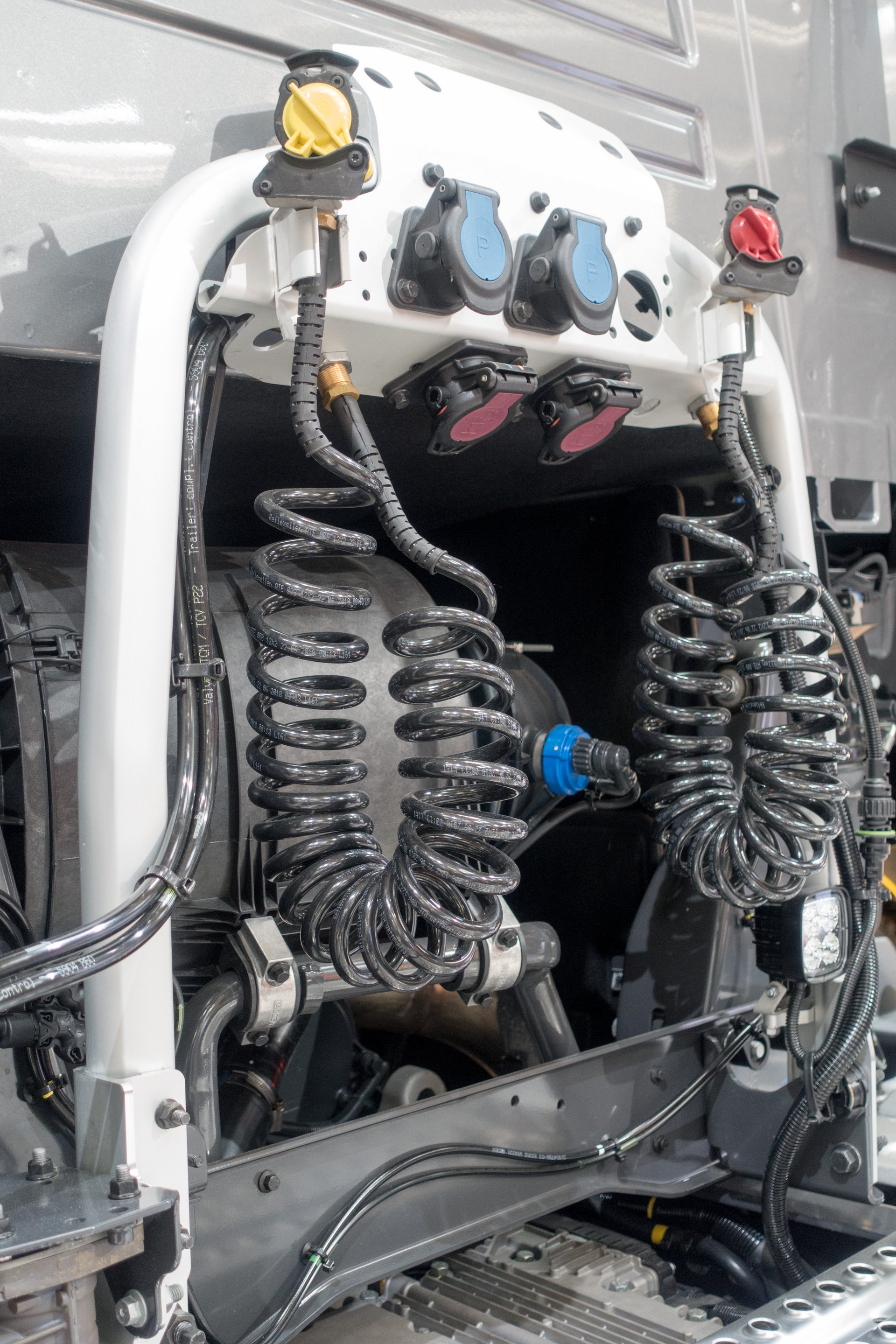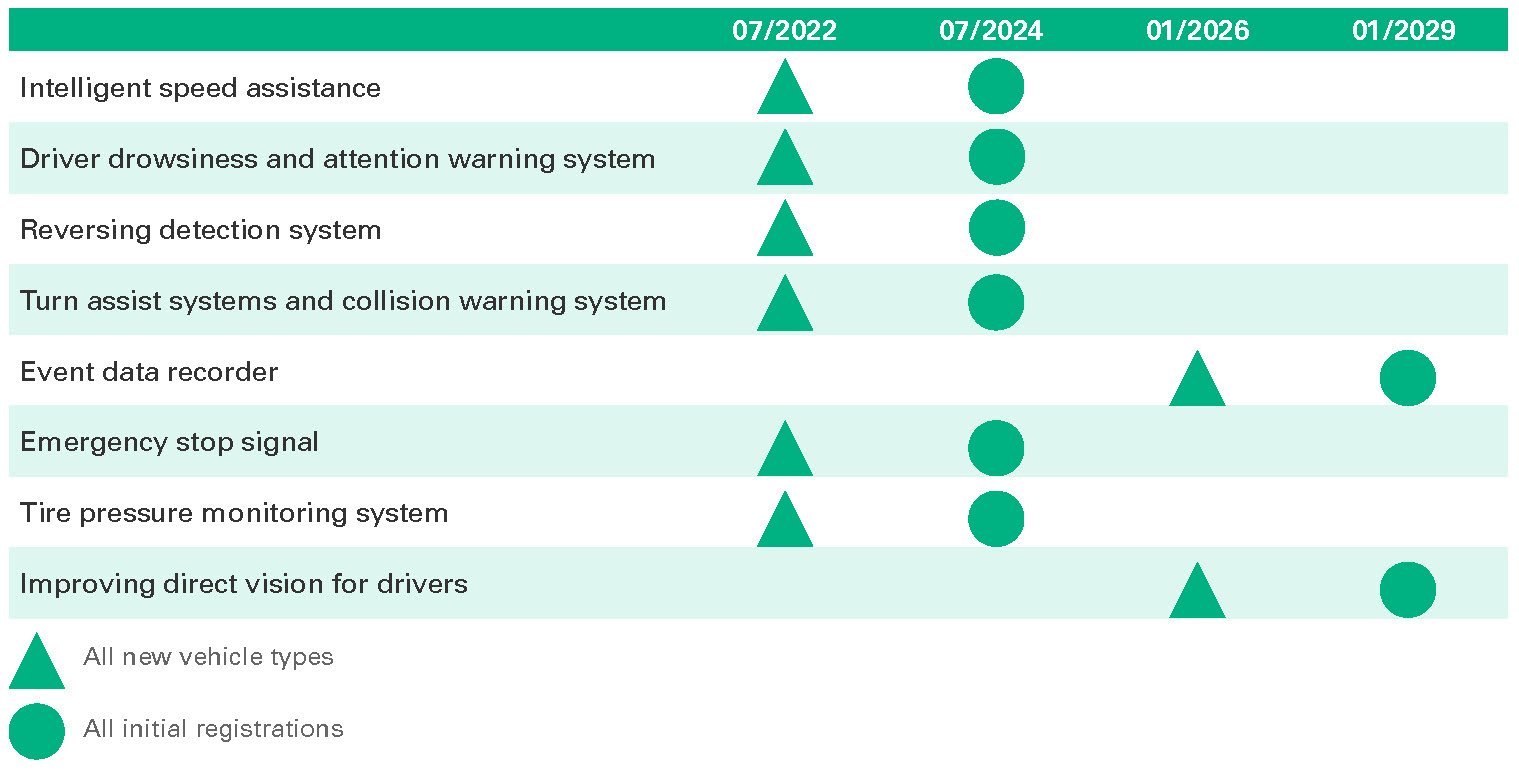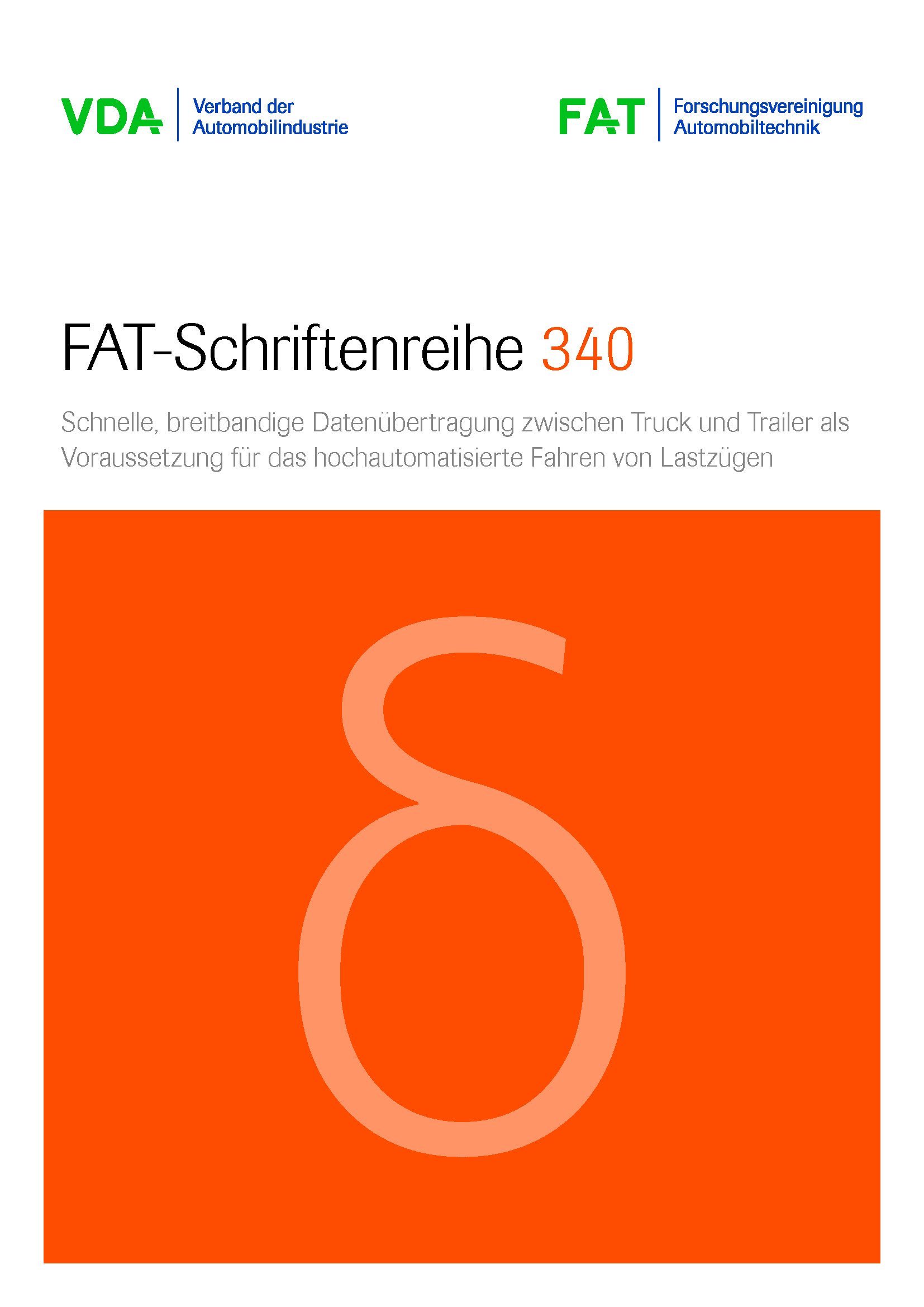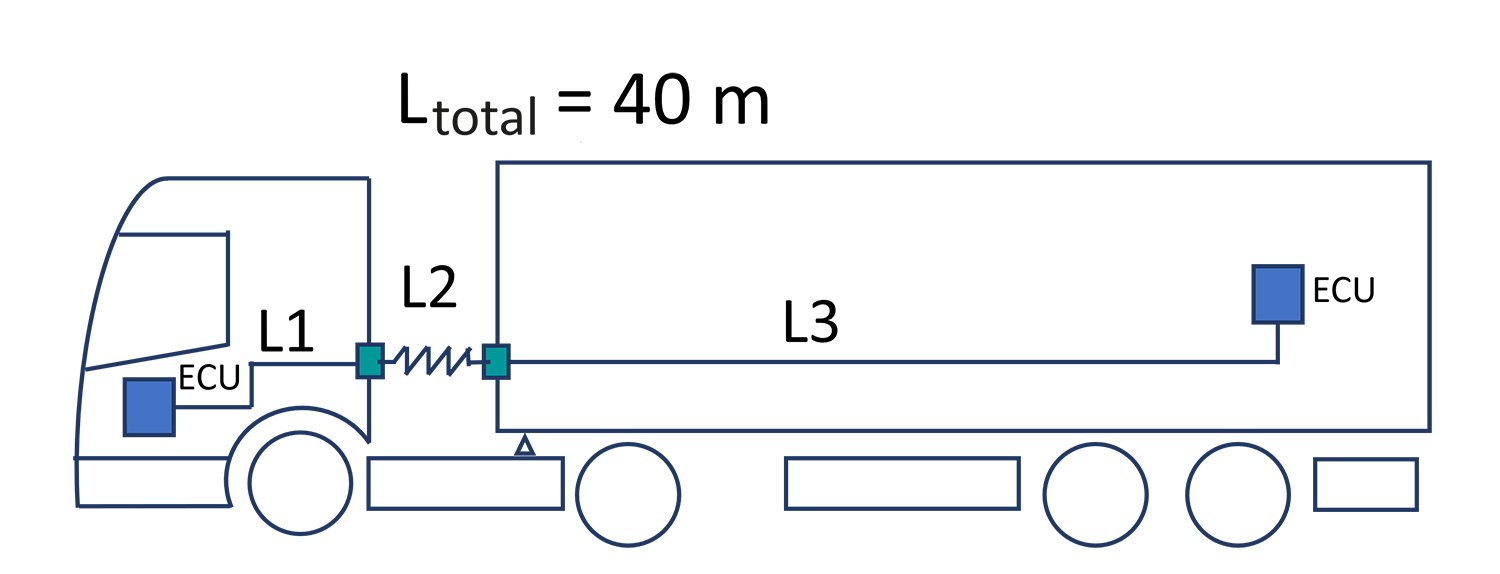Content
What is the state of the technology?
Standard connectors with CAN-Bus data lines
Two standardized plug-in connections represent the current state of the art for the electrical transmission of signals between towing vehicles and trailers in the commercial vehicle sector: the 15-pin plug-in system according to ISO 12098 transmits light and auxiliary functions, and the 7-pin system according to ISO 7638-1 transmits brake signals. In addition, two air coils supply the air brake system.
During the development and standardization of these two electrical connectors, the latest data transmission technology at the time was used in addition to the contacts for transmitting light signals and power supply to consumers. The CAN bus (Controller Area Network) developed by BOSCH first found its way into passenger cars and shortly thereafter into trucks. This technology of serial data transmission via two twisted wires is still the most widespread, safest and most cost-effective solution for automotive applications today.
The CAN bus is implemented in the 15P connector for the light and supply lines according to ISO 12098 as well as in the 7P EBS connector (Electronic Braking System) of ISO 7638-1 - click here for more information on contact allocation and arrangement for ISO 12098 and ISO 7638-1.
The General Safety Regulation (GSR) makes new demands on trailer operation
With EU Regulation No. 2019/2144 on the type approval of motor vehicles and motor vehicle trailers, which came into force on January 5, 2020, new vehicle safety systems are made mandatory for heavy commercial vehicles in the future.
See also the ERICH JAEGER article on the General Safety Regulation (further information here).
These new requirements can be implemented in the data protocols according to ISO 11992-2 and -3 on the existing CAN bus lines.
When implementing new safety systems, the authors of the EU directive would have liked to integrate even more functions of partially or fully autonomous driving. However, the limiting factor in the introduction of these partially or highly automated driving functions for entire truck trains is the limited speed of the current data transmission: A maximum data transmission rate of 125 kbit/s is possible via the CAN-BUS data channel.
Technology change to broadband data transmission - a study
In the Automotive Research Association under the umbrella of the VDA (German Association of the Automotive Industry), ERICH JAEGER is collaborating on the future of broadband data transmission for high-speed data transmission between truck and trailer. One result of this cooperation is the study "High-speed, broadband data transmission between truck and trailer as a prerequisite for highly automated driving of truck-trailer combinations".
A first report of the research work with many technical details and metrics is available for download in German under the FAT publication series with the number 340 at the VDA: https://www.vda.de/vda/de/aktuelles/publikationen/publication/fat-schriftenreihe-340
Why a change in technology becomes necessary
Partially or highly automated driving functions make use of numerous interconnected sensors to identify objects in the environment: camera and lidar systems require more powerful bus systems with high data rates and short latency times. Passenger car and light commercial vehicle manufacturers are already starting to apply such new technologies.
Challenges in the commercial vehicle sector
In commercial vehicles, however, things get more complex. Here, different truck manufacturers come together with different trailer manufacturers. Problem-free interoperability is a prerequisite for the transmission of safety functions. In addition, data transmission must be ensured over significantly longer distances - up to 40 m for large vehicle combinations.
The challenges for a new broadband data connector system are very complex, as vehicle manufacturers have to take national regulations and EU regulations into account as well as international regulations. In addition, the current connectors have been in use for around 30 years, and the new technology is also expected to be the standard for a long period of time despite the rapid changes in technology and also to be backward compatible.
The adaptation of regulations, laws and standards will require several years of work to ensure legal certainty and compatibility in the admission procedure for cross-border delivery traffic.
Due to transnational initiatives to introduce more autonomous driving functions, new regulations will be coming our way in the future. However, it is not yet possible to predict at what point fully autonomous driving according to Level 5 (according to the 5-level classification for automated driving) will be possible. Nevertheless, the authors of the study have paid attention to the greatest possible future security when considering the new system.
Requirements of the ISO 26262 standard on a communication link
Partially autonomous driving functions and systems must of course function extremely safely and reliably in order to keep road safety as high as possible. To this end, there is the ASIL classification (Automotive Safety Integrity Level) to which these systems must conform (more information on this classification and the ISO 26262 standard can be found here). When reaching the area of automated driving according to level 3, the function must be assigned the highest ASIL D according to ISO standard 26262. Consideration of this classification must be taken into account during development.
Results of the study - going for Automotive Ethernet
A radio-based or optical data transmission was excluded in the course of the consideration of all possible transmission channels. The study therefore considers the cable-based transmission system as the final solution for implementing the specified and listed requirements.
After considering several communication systems with different transmission speeds, the authors eventually settled on Ethernet technology.
One exclusion criterion was the planned applications and the required data rate and latency. The applications with the highest data volume are cameras - e.g. for rear area monitoring as driver assistance or for 360-degree views as maneuvering assistance. Many other applications for controlling new functions on the trailer require lower data rates.
Commitment to Automotive Ethernet 1000Base-T1
The evaluation of the data sets for the different applications finally resulted in the following necessary parameters:
| Parameter | Value |
|---|---|
| Data Rate | 1 Gbit/s |
| Latency | 1 ms |
| Channel Length | 40 m |
The study examined all bus systems already in technical use as well as systems still under development in order to define a far-reaching and future-proof technology. The choice then fell on the 1000BASE-T1 technology specified under "Fast Ethernet".
Ethernet technology is based on packet-switched network technology with addressing to a unique receiver. This technology, which has long been established in the industrial sector, has already been used in the passenger car sector: It is applied wherever the CAN-BUS technology, which operates according to a master-slave principle, has reached its limits.
1000BASE-T1 is a single pair technology with a bandwidth of 600 MHz. This is also known as IEEE 802.3bp and is specified by OPEN ALLIANCE for automotive use.
Two different types have been defined according to the length of the transmission channel (more information here):
- Type A for unshielded lines (UTP = Unshielded Twisted Pair) for a range of 15 m.
- Type B for shielded lines (STP = Shielded Twisted Pair) for a range of 40 m


In-depth investigations to qualify the existing connector systems according to ISO 7638 and ISO 12098 for data transmission according to 1000BASE-T1 have failed.
The ERICH JAEGER approach
As a consequence, ERICH JAEGER as a cooperation partner of the study provided a newly developed prototype of a complete connection between truck and trailer for an investigation.
In the plug-in connection with the external geometry data of the known 15-pin plug-in connection according to ISO 12098, the company integrated two new types of data channels as well as additional signal contacts.
A completely new development is also a spiral cable equipped with two 1000Base-T1 channels.

The systems tested by ERICH JAEGER have shown that the technologically new connectors and coiled cables meet the requirements of the 40 m transmission channel.
Beyond that, however, the investigations of the VDA report can only be considered informative due to the lack of qualification of the transceivers for the 1000BASE-T1 Type B (for 40 m).
In 2022, however, the first chips for the 40 m data channel will presumably come into the market. This would make the new connector system with a data channel based on the 1000BASE-T1 Fast Ethernet technology the most modern system currently available on the market.
Backwards compatibility
What does the introduction of such a new connector system mean for the current system landscape with the familiar 7-pin connector ("brake connector" according to ISO 7638) and 15-pin connector ("light connector" according to ISO 12098)?
From here on, the standardization work begins, in which backwards compatibility is of high priority for the user and ERICH JAEGER and will be taken into account. The known systems will thus continue to exist for the time being. But in the not too distant future, the system landscape will expand and new smart functions will be possible via a new connector.
Conclusion - New data channel has to meet high requirements
With the current data channel, ERICH JAEGER is shaping the future of broadband data transmission between tractor and trailer.
The integration of the new technology into the world of commercial vehicles, agricultural or construction machinery is a core competence at ERICH JAEGER. The new modular connectors take into account the special features of the respective industry.
What they all have in common, however, are the high requirements in terms of extreme ruggedness and reliability:
- Operating environment from -40°C to +125°C
- Highest requirements for watertightness (IPX9K, IPX7)
- High number of mating cycles: several thousand over the entire life cycle.
- Integration into a system that also meets the highest safety requirements of automated driving functions with an ASIL (Automotive Safety Integrity Level) safety rating still to be defined
- Use of rugged hybrid cables for data and supply lines with high elastic recoil forces for coiled cables
- Functional reliability at low temperatures in winter and extreme heat due to high ambient and engine/transmission temperatures
Industry-specific applications
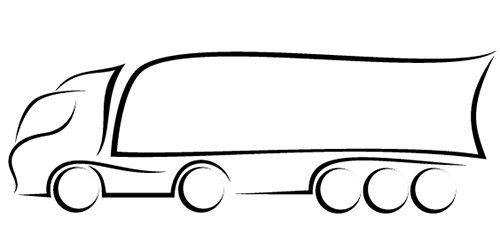
Heavy Goods Vehicles



Agricultural Machinery

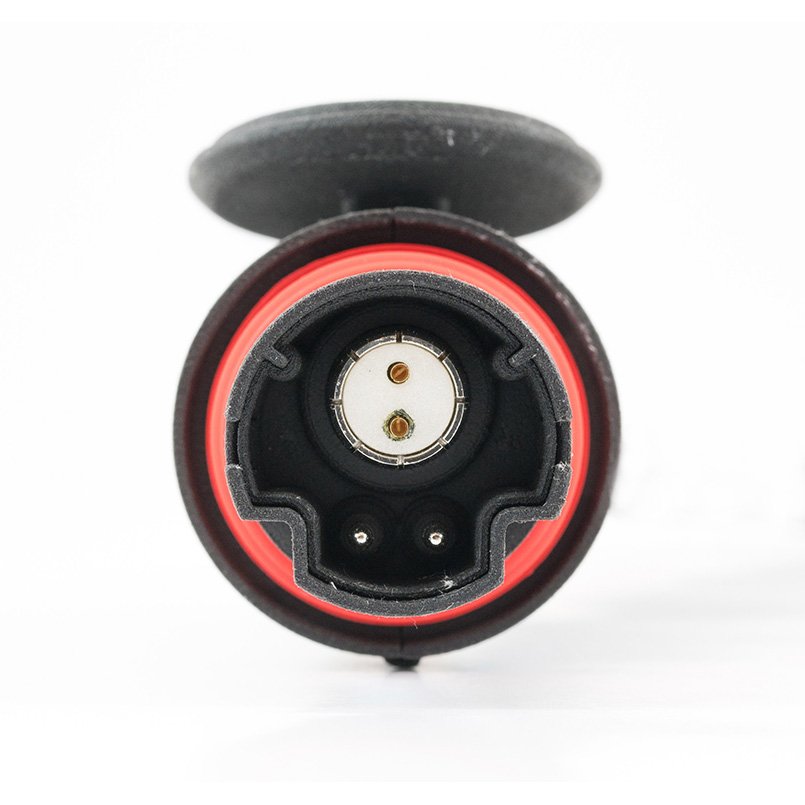

Construction Machinery





